Tosh Berman's Blog, page 189
December 7, 2015
"ROADBOOK" BY Hunter Barnes (Reel Art Press)
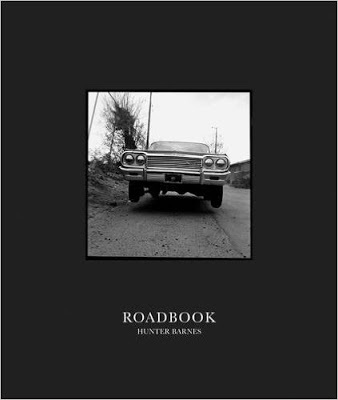 ISBN: 978-1-909526-27-3 Reel Art Press
ISBN: 978-1-909526-27-3 Reel Art PressWhen you get down to it, the United States of America is a very odd country. So large, with so many different cultures within its boundaries. That, is probably what makes it a very interesting place. Personally, it scares me to death. Unless it's nature shots of parks, the seaside, and cute animals, the rest of the country is a fearful and haunted place. "Roadbook" by Hunter Barnes captures what is scary to me, in other words, the human being.
All of the black and white photographs are from the 21st century, but it could be any era in the States. They say things change, but in certain parts of our world, nothing changed. A series of images from Sammyville, Oregon is portraits of men with their guns. Most are wearing their weapons as if it was the wild west - which the case may be in Sammyville. One thing is clear. There will never be a ban on guns in this country. There is no way in heaven or hell, that these guys and gals will give up their firearm. It's not going to happen. Not in my lifetime nor if I have a kid, not in their lifetime either.
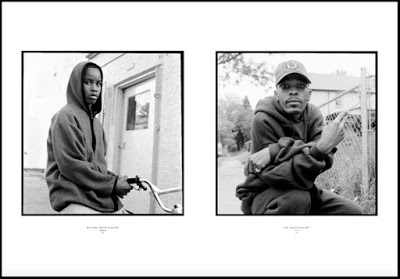 Photographs by Hunter Barnes
Photographs by Hunter BarnesThroughout the book, except on a section on really beautiful women in New York City (why in his right mind, would he leave the city?), we see life on the margins. Motorcycle gangs in NYC, prisoners in CA State Prison, low riders in New Mexico, Black gang in East St. Louis, white Baptists, and rednecks. Barnes captures the world quite well, because I suspect that these people accepted, or at the very least, trusted him. As far as I know this wasn't a fast hello and goodbye project from Barnes, he actually spent time with these people. The portraits show a relationship between the subject matter and the photographer. I have always believed that a good picture is not just the image itself, but that the photographer knows the culture, and its people, and then the photograph can happen. At least the good ones. And this book is full of great portraits.
As usual, the book is beautifully designed by the good people at Reel Art Press. The design never gets in the way of the images by Barnes. It serves the image.
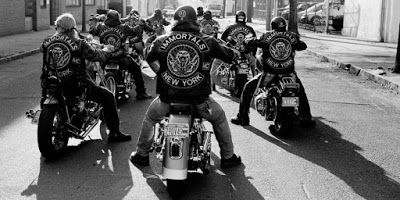 Photograph by Hunter Barnes
Photograph by Hunter Barnes- Tosh Berman
Published on December 07, 2015 19:14
December 6, 2015
The Sunday Series: Sunday December 6, 2015

The Sunday Series
Sunday December 6, 2015
I’m offended when people treat me like if I am Mr. Peepers. I do tend to read and wear glasses. But that doesn’t mean I don’t go to the dark world every so often. There is a website called “Red Tube, which is a porn site. It’s not really the actual sex that turns me on, but the situation that the girls are placed in. There is a series of videos called “Calendar auditions, ” where the producer (or he works for the “company”) invites women to his office where he interviews them for a job as a greeter for an online calendar website. She is supposed to say “Hi guys, I’m so-so, and have a nice day.” She is then required to spin around, show her ass a bit, and that’s it. The producer basically seduces the woman and has sex with them in front of his camera. I have seen at least ten of these videos, and all of them have really attractive girls in them. Also, every one of them is exactly the same. Even the same dialogue.

For one, I’m fascinated with the actual location where these segments are filmed. They are either in an abandoned office space, or in some funky apartment that has no personal items whatsoever. There are blank walls, and usually a bed and that’s it. The one’s that take place in an actual office is just a table and a leather couch. Again, very minimal. I get the impression that the office is located in a big building, which probably has security on the ground floor.
The video starts (always) focusing on the shoes of the producer. He’s holding the camera and never stops holding the camera even when having sex with the girl. If the girl is hesitant, he comes up to her and with her permission he touches her cheek. Time-to-time, he would have the girl hold the camera, mostly on her face, when he is either doing her from the behind, or going down on her. The actual work desk has nothing on it. No laptop computer or pen or pencils. Totally and absolutely nothing. Every video, he has sex with her on or by the table. The one’s that take place either in a hotel or apartment. Also totally blank. There is nothing to look at, except the girl. Every time I see the decor, I wonder what the models thought once they entered the premise. All of them are nervous. Like they know they are entering a place that they shouldn’t have.

This is where I have to admit something. I’m totally turned on. Yet, totally repulsed as well. I have always read, and this, mostly in the mainstream media, about how some male, got a girl to come to his location, and somehow convinced them to do sex, and then eventually, this person posts the footage of the sexual activity online. That is beyond disgusting. On the other hand, I’m glad that I don’t do these things. But I’m attracted to these types of videos where these things happen. I hate myself after watching them, but….
You know, you're in front of your computer, and you may have a drink or two, and let your fingers type away - and bingo, you end up on the Red Tube site. I make sure no one is looking at me while watching the videos. I can never understand the enjoyment of watching porn with another. Sex is such a private manner, and that includes watching pornography. It’s a world that is not this world. There are meditations where you place yourself on a beach, or in the forest. Perhaps even in a hot bath, where trouble just melts away. Porn, if done properly, will take you to an area in your life, where your mind can explore the darkness within you. It is not even a release, but a promise of a journey of sorts. As your eyes wander over her body, and as your host in the video, is doing what you would want to do - the feeling can leave you both depressed and of course, shamed, at the same time. The thing is, you will realize that there is not a better tomorrow.

As a citizen of this world, I have become attracted to things I shouldn't be. For one, I live in a world that says "No" to anything that is provocative. To taste the unknown, and swallow it down, so that one becomes part of what is forbidden, is part of the pleasure. Am I happy about this? No. In fact, I hate myself for even thinking of such a thing. Yet, what is there or what 'can' be there, can easily be here. What I want is a workplace that has nothing on the walls, a desk with nothing on it, and a video camera or two. I would make and arrange appointments. All vague. Yet, we tend to wander without a map. We follow our desires to the strangest places.
The moment I feel free is when I’m watching videos from RedTube, and thinking about my workplace and how it can be effective as a location for pleasure. A pleasure that will never come to me, but often desired. I watch Red Tube, and therefore I am.
Published on December 06, 2015 15:34
November 29, 2015
"Sidewalking: Coming to Terms with Los Angeles" by David L. Ulin
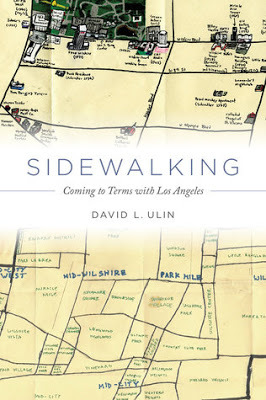 ISBN: 978-0-520-27372-6 University of California Press
ISBN: 978-0-520-27372-6 University of California Press"Sidewalking: Coming to Terms with Los Angeles" by David L. Ulin
As a life-long citizen of Los Angeles, I have always loved it here, because here is not here till I'm "here." This is a place where your imagination can run down the entire Sunset boulevard. Los Angeles is endlessly fascinating, and never-ending. For one, whatever mood you're in, one can just hop on a bus, and let it take you to a foreign part of the world. The beauty of this location is that it has endless possibilities of landscapes that come and go. There are so many languages spoken throughout this metropolis, one can easily become an outsider, even though you were born and lived here for your entire life. Not only can I invent a new identity, but everyone here would accept that aspect of my or our lives.
There are countless books on the culture of Los Angeles, meaning its people as well as its architecture, and a lot of them just go "huh?" For me, the confusion is the thing, and also makes Los Angeles the most unique city in the world. David L. Ulin's homage and study of Los Angeles, "Sidewalking" is one version of a New Yorker coming to terms with the city of illusions. An enjoyable book. It is very much like sitting down at the top of the Ace Hotel in downtown Los Angeles and chatting about why we are here and even more important, what is here, exactly.
All urban areas change. Sometimes one cannot notice the change, but believe me, change is happening under your nose. Los Angeles on the other hand, one can physically see the changes taking place as it happens. Walking Sunset Boulevard a month ago, is so different now. New structures are being put up, and even one can notice a different accent or language in the neighborhood. And make no mistake about the neighborhood. Los Angeles is a city that for sure has a center and a west coast view of the Pacific ocean. It expands like a wild weed growing in an industrial park. Ulin captures the changes that took place in Los Angeles, and meditates on what those changes mean to the Los Angeles citizen and beyond. He mostly focuses on his neighborhood in the Wilshire Miracle Mile, but also the Grove (outside shopping complex), and Downtown. As a fellow citizen of this town, I can see his point of view quite clearly. What he says is perfectly true. "The Darkroom" structure on Wilshire is for sure a masterpiece storefront. The theme driven architecture of the early part of the 20th century is very much in the blood of this city. Sadly, not only that era is gone, but so are the buildings. Nevertheless there is the idea of parks being built that are actually shopping centers - such as the Americana and the Grove. They're not fenced in, and gives the illusion that they are public spaces, but in fact very much a private property landscape for the consumer and the retail world.
So as a fellow who likes to wander around his neighborhood (Silverlake, Echo Park, Hollywood, and parts of Glendale) I can fully understand Ulin's take on his part of the world as well. Each chapter of the book is very self-contained, so in a sense this book's theme is Los Angeles, but one can separate the chapter from the book. Very much like the city itself. Which is its beauty and charm, just like "Sidewalking."
- Tosh Berman
Published on November 29, 2015 14:39
The Sunday Series: Sunday November 29, 2015
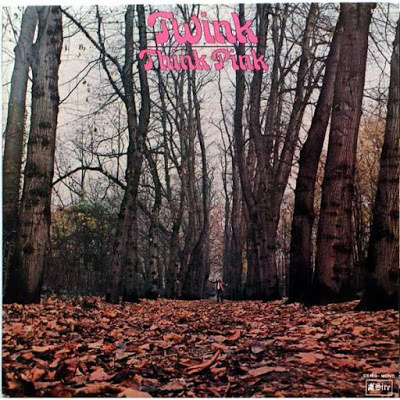
The Sunday Series:Sunday November 29, 2015
“Twink” is a gay slang meaning a young man who looks younger than he is, and physically usually has no body or facial hair. Twink is also a British musician, who released a solo album called “Think Pink, ” which was recorded in 1969 and released in 1970. Listening to it in 2015, one can easily think “oh such a 1969 album.” Loose jams and British hippie abandonment are a wonderful way of spending a Sunday. On the other hand, I have always regretted that I didn’t look like a “twink.”
I have a lot of body hair as well as a headful of hair. The head part is OK, but why do I have such a heavy beard? It is such a wrong look for me. Besides my terrible looking teeth, I can see people, when I first meet them, looking at my beard or what is left of it. I tend to need to shave twice a day. I even went to the barbers to get a proper and professional shave, and by the end of the day, I still have a shadow on the lower side of my face and the entire neck. The biggest insult is when I asked for them to shave the back of the neck area, and he asked me how far down did I want to go for the shave?

The irony is that I’m obsessed with “Twinks,” and at the age of 61, I want to be a “twink.” There is a “twink” code that is in place, especially on the Internet. For instance, “c” is for the color of hair. “i” is for length of hair. “h” is regarding hair on the body, and how much of it. The most important code letters are “k” for how kinky? And then there is “e” for endowment. The twisted thing about all of this is that I’m not even gay. Yet, I’m obsessed with this aspect of homosexual culture.
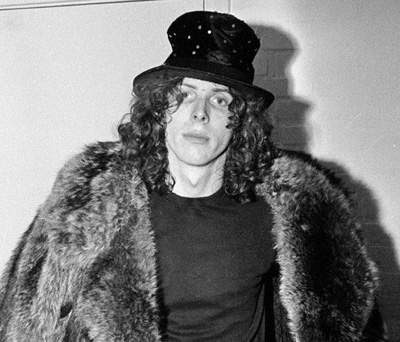
I purchased the album by Twink, “Think Pink, ” thinking it was an album by or about the “twink” culture. Boy, was I wrong! With lyrics like “watching dawn give birth to the light, ” I knew I was far away from the land of beautiful looking young men. Not all is lost, because I actually enjoy this album, and it’s worth the price of this priceless vinyl, that I got one Sunday at the Pasadena College swap-meet. The album expresses a sense of anarchy. Yet, lyrically it is very cliche, in that it is set in its time and place (UK). As I play this album over and over again, it takes me away from the world of the “twink” and into a world of free-love, absurdity, and ‘getting-my-head-together. ' What I originally desire was to be among the “Twinks.” I thought the easiest way for me to surround myself in my world of Twinks, was to go to iconic Santa Monica Boulevard in West Hollywood.
I went there, but was shocked that there were no young men, but guys who are big, and have even bigger beards. In other words, they look like me. And the same age as yours truly. I haven’t the foggiest idea what my life should or can be. All I know that this is a Sunday, I have to face the fact that it’s the first day of the week, and more likely a week of total disappointment. On the other hand, I do own a great album.
Published on November 29, 2015 12:13
November 28, 2015
"The Factory of Facts" by Luc Sante (Memoir/Cultural History)
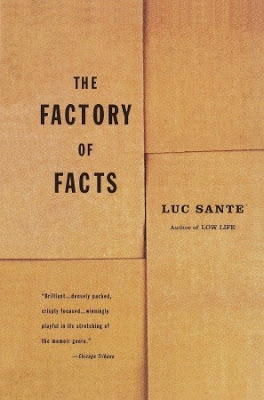 ISBN: 0-679-42410-5 Pantheon Books
ISBN: 0-679-42410-5 Pantheon BooksThe Factory Facts by Luc Sante
One of the most unique memoirs I've ever read, but then again, Luc Sante is one idiosyncratic and special writer. "The Factory of Facts" deal with Sante's childhood in his native country Belgium as well as New Jersey, his adopted home with his family. The beauty of the book is that Sante writes about culture as the foreground to his life. Although our lives are quite different, we are almost the exact age. Both of us were born in 1954, and I recognize his cultural posts throughout the book. Whatever it's a candy company that doesn't exist anymore, or a TV show/Film - I understand the importance of items that surround one's life.
More of a collection of essays than a running narrative, Luc Sante came from a hardcore working class world, where I believe he's the only one who went on to college. A brilliant observer of things around him, he is also sensitive to the fact that he is one from two cultures - Belgium and the United States. Both are complex and multi-cultural locations as well. One chapter he discusses what it is like to live in America and think/talk in French. A lot of people think of translation as something easy as a Google app, but the fact the thinking is different, which conveys the 'fact' that language is a big part of our make-up. Signage in a department store can be something obscure and totally odd, because it doesn't really make sense in a French context.
"The Factory of Facts" is cultural history more than a straight ahead memoir, but the surroundings can tell a great narrative, when it is placed behind an individual. I have to imagine writers will find this book fascinating. I, who know very little of Belgium and its culture (only TinTin I'm afraid) I learn a lot through the eyes and mind of Sante. As a writer myself, I'm consistently reminded how important my surroundings and things are to me. Especially as a writer, and this is a great book that is suitable for those who want to write and those who do the job.
- Tosh Berman
Published on November 28, 2015 13:18
November 27, 2015
"Tosh Foundation" by Tosh Berman
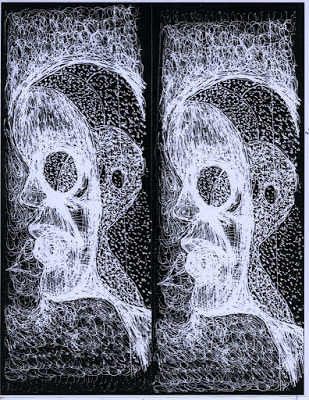 art by Sam Vernon
art by Sam VernonI'm very happy to have my short story "Tosh Foundation" on the great 3: AM Magazine website. You can read my story here:
Tosh Foundation
Published on November 27, 2015 06:59
November 26, 2015
"DUFFY/BOWIE - Five Sessions" by Kevin Cann and Chris Duffy (ACC Editions)
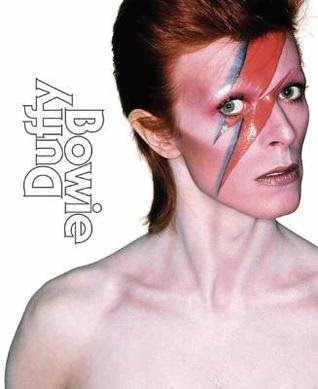 ISBN: 978-1-85149-765-2 ACC Editions
ISBN: 978-1-85149-765-2 ACC EditionsDUFFY/BOWIE - Five Sessions by Kevin Cann and Chris Duffy
This is a superb book on the David Bowie world, with amazing images by the great British photographer Duffy. Duffy's son Chris and Bowie historian Kevin Cann have put together a really remarkable book on Duffy's work with Bowie. Five sessions being early Ziggy portraits, the cover for "Aladdin Sane," photo shoot for "The Man Who Fell To Earth," "Lodger" album cover and the Scary Monster and Super Creeps" album as well.
Each chapter is devoted to one project, and what we get with that chapter is an oral history from the participants of what and how it happened. Bowie of course, worked very closely with his graphic artists, and in many ways, all the talent were and treated as equals to present the now iconic Bowie image. The strongest chapters are on "The Man Who Fell To Earth" film, and which is very insightful in the making of the film, but also gossipy. Also the making of the "Lodger" album cover is equally fascinating, and oddly enough, not discussed or much written about for some odd reason.
Duffy, it seemed, was a man of great personality. Not a push-over by any means. It seems Bowie had a huge respect for him and his work, and Duffy felt the same way towards Bowie. The relationship may have hit dark waters during the shoot and design process of "Scary Monsters," but clearly Duffy is one of the main architects of the Bowie icon. Especially with the "Aladdin Sane" image.
At first, I thought this would be a good illustrated book on Bowie's specific graphic works, but this goes way beyond that. This is very much an essential book on the man who fell to earth, as well as a loving tribute to one of Bowie's great photographers. Truly an essential Bowie volume.
- Tosh Berman
Published on November 26, 2015 13:17
November 24, 2015
"Sam Phillips : The Man Who Invented Rock n' Roll" by Peter Guralnick
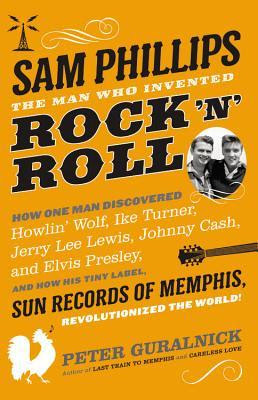 ISBN: 978-0-316-04274-1 Little Brown and Company
ISBN: 978-0-316-04274-1 Little Brown and Company"Sam Phillips: The Man Who Invented Rock n' Roll" by Peter Guralnick
I'm a mega-fan of Peter Guralnick's two volume biographies on Elvis Presley. For sure I thought a biography on Sam Phillips, the brains and sound maker for Sun Records, would be equally fascinating. But the truth is no. For one, this biography is way too long. Without a doubt, Guralnick feels very close to his subject matter, and clearly he loves the music that came out of Sun. Still, I had a hard time keeping my attention to this book. One also gets the feeling that Phillips was right behind Guralnick's shoulder as he was writing it. On many levels, it reads like an authorized biography - which can be good or bad.
Sam Phillips was a brilliant record producer. The Sun Records sound is a very eccentric noise. Which is not odd, considering that Phillips was an eccentric recording other eccentric artists. Elvis was the man who fell to Earth. Probably the closest thing to an alien in the early 1950s. I feel Phillips captured all the oddness in this young singer's recordings. One of the reasons why Sun Records era Elvis never sounds like an oldie, because it is still fresh due to the essence of his performance and voice. In my opinion, there is no such thing as a bad Sun Records release. My favorite is Carl Mann, and sadly he only gets a page or so out of this 660 page book. Sam's life is not really that dramatic compared to Elvis. The narration of Elvis is a fascinating one, and it has all the trademarks of a tragic Shakespeare play. Guralnick beautifully played out on the heights and the super lows of Elvis, and Sam Phillips just doesn't have the emotional range four such a biography. Still, Sam Phillips is an interesting man. It would have been more interesting to me if there was a book length Q & A format, instead of the biography. Or even Guralnick's narration on knowing Phillips and what it meant to him. He writes about that in the second part of the book, which I think could have been a stand alone piece.
Still, this is a must read for anyone interested in Memphis or its musical history. The shocking thing to me, especially admiring and reading his Elvis bios, that this book should have been the essential read on that subject matter. It's up there, but not the best.
- Tosh Berman
Published on November 24, 2015 16:27
November 22, 2015
"The 1960s: Photographed by David Hurn" Introduction by Peter Doggett (Reel Art Press)
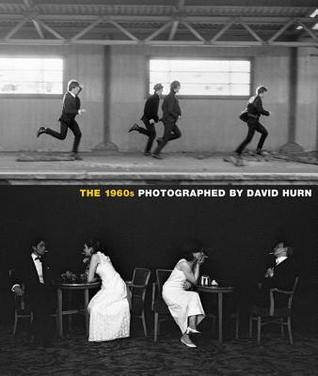 ISBN: 978-1-909526-13-6 Reel Art Press
ISBN: 978-1-909526-13-6 Reel Art Press"The 1960s Photographed by David Hurn" Introduction by Peter Doggett (Real Art Press, 2015)
The 1960s were a perfect landscape for photographers. Not saying that the era itself was perfect - far from that, but on the other hand the world felt new. It is interestingly noted in Peter Doggett's opening introduction that the photographer David Hurn wanted to be an anthropologist, but couldn't be due to poor school grades. On the other hand, I feel his interest in anthropology is very much the focus of his work in this book, "The 1960s." Whatever he's photographing Sean Connery or people doing their everyday life thing on the streets of Manhattan to a dance that took place at the Hammersmith Palais, he is photographing the everyday of people of various classes and nationalities.
There's the image of the 1960s, that we pretty much have grown into, due to photographic images of that era, as well as its literature, music and films. Hurn captures another level of that era through his commercial photo work for various magazines. One gets the feeling that he's not only documenting a place, a moment, an individual, but also how that person, place or moment is placed in the big picture of that entire era.
When a photographer is working, he is just capturing in what is in front of him. Unless it's a job in a studio where you have complete control of the situation, it is mostly chance of finding something interesting that took place on the street, or a passing incident (he captures a robbery taking place in London) by accident. This book is put together fifty years later, looking at the past circa the images by Hurn. The anthropology kicks in, because we are not only seeing The Beatles as themselves, but how they are placed in a world that is perhaps not of their making. So the subject matter is not really the Fab Four, but the people surrounding the mop-tops. The same goes for the images of people vacationing on an island off London, Herne Bay, which was the spot for the citizens of London's East End. Or, the young debutantes about to be presented at the Queen Charlotte's Ball.
in the controlled environment of a photo-studio, we see Jane Fonda (Barbarella) at work, and Hurn comments on her that she was kind to the people who work on the set, as well as Sean Connery's dis-interest in publicity shooting for the early James Bond films. These are people who are interacting with fellow professionals and I think the inter-subject matter of these images is people working and living within a world of some sort.
This handsome book conveys the 1960s not as an objective view, but clearly through the point-of-view from its photographer. Each section of the book has commentary by Hurn, that is short and quite profound. A superb photographer, but also this is a beautifully edited book by Tony Nourmand, who is also the publisher of Reel Art Press.
- Tosh Berman
Published on November 22, 2015 13:58
The Sunday Series: Sunday November 22, 2015
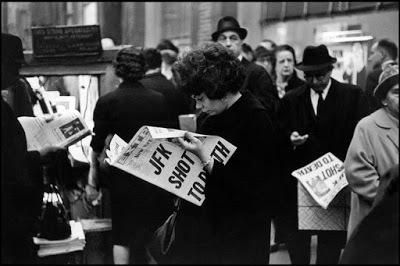
The Sunday Series
Sunday November 22, 2015
52. 52 years ago, on this date, was the first time I saw my teacher cry in front of her students. In fact, it was the first time she showed emotion besides hatred or approval of her classroom students. They announced the news over the school PA system, and I can see it startled her, and then the tears flooded her face. I don’t know if it was the shock of hearing the news over the PA system, or the effect it had on my teacher's behavior that early morning on November 22. Up to that date, and just 9 years old, I never experienced death, either by a human or animal such as a pet. Nothing died in my life at that time. Even cowboys didn’t die on TV. The worst that can happen is someone would knock the hero’s back of his head with a gun butt, or the hero may shoot the gun out of the criminal's hand, but that was the worst that can happen. After getting knocked on the head and gaining consciousness, the cowboy hero would rub his painful head up and down, and get back to business, which is to fight crime.
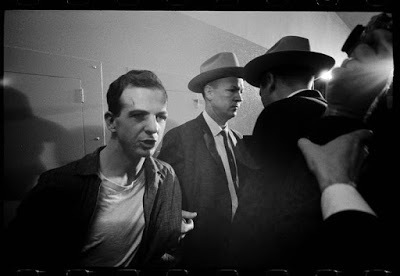
As I got older, I did experience death. But what is strange is the news of hearing a famous person dying compared to someone you know who died. The death of a friend or an acquaintance is much more abstract than a famous person’s death. I don’t think I have ever been shocked by someone’s passing, except my dad, but everyone else it seemed not real to me. Yet, when it happens to the famous, the death is more prominent for some reason. When someone dies that is close to you, one can’t really share that feeling. Yet a famous death is often shared in great detail. If they are even really famous, one can buy a magazine or book devoted to that person’s life and more likely death. The key thing in these publications is the last photograph of the deceased. There is an obsessional need to know that there is such a document in place. The last living presence of that being, as he waves to an audience in the back seat of the car, is shocking enough. Many years later, I saw a photograph of him in the morgue, and even then, I couldn't believe I was seeing what I was seeing. To see a body when there is no life in it, is truly shocking to me. As for a musicians’ death, one hears music being played on the radio, and there may be various tributes being played out on various media mediums, but the death of someone in the family or friend, there is never a PA system announcing that.
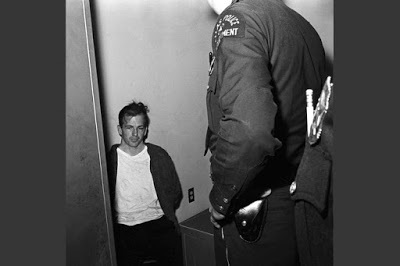
To this day, when I hear “Walking On Thin Ice, ” I think of it as the last recording by this famous musician. Of course, his passing, brings a certain intensity to the work. One can even feel that this was the artist’s intent, to have this song as the final message. The truth is, the artist didn’t know what would happen that night. It is not always fate, sometimes shit happens for no reason. And like the other individual who was shot, he looked shocking in the morgue photograph as well. I looked at it, like the others, but I wished I didn't really see that image. I rather think of him as being alive, not dead in the morgue.
On November 22, and over time, it looks like a complex series of incidents happen. There are many theories, and all of them sound possible. But then again, it sometimes just takes one individual to aim, and shoot, that changes everything. How big can that change be, due to one man shooting another dead. The narration needs to be larger. At the time of the shooting, it was bigger than life. The violence of it was the star attraction that day. I knew the victim, but only on black and white images printed in the daily newspaper. I don’t even remember seeing him on television, and I know he is one of the first figures to use that medium for political as well a communicative purposes.
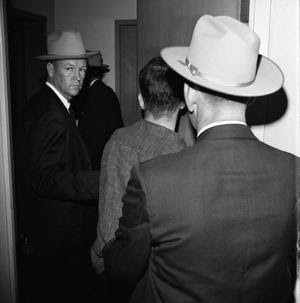
When he was killed 52 years ago, they played out all the angles. They talked about what direction the bullets came from, and even hinted that it came from more than one location. It didn’t seem real. There were so many narratives running through the act of an assassination. A family member or friend just dies, and that is the end of the story. But a star or a public figure, the death process and the action is always complicated for some reason. It is almost like death is too personal, so we need a famous person to die, so we can examine the why, what, where, and how it was done. It’s not polite to do that when a person we know dies. We just quietly accept it.
The second time I experienced death on a personal level was when the accused assassin himself was assassinated in front of live TV. Now that was a real death, and as they re-played the moment he was shot over and over again, one thought “oh wow he was alive at this point, and then when he’s down, he’s dead.” I felt I was watching a bridge between life and death, but I couldn’t make out the architecture of that bridge or walkway. With respect to the first assassination, I wanted to see it over and over again, in the hopes, I get a glance of that string, road, or whatever it is from life to the other side. When he was in his car waving at the crowd, he was so alive, and then a few seconds later he wasn’t. That shocked me. It really disturbed me.
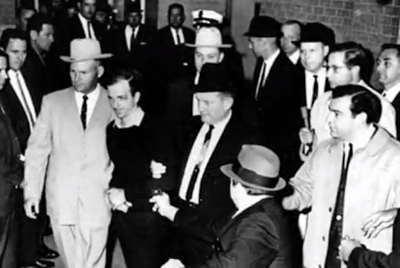
When my dad told me that a friend of the family died, and even though I really like this person, I didn’t know how to react to his death. I felt like it didn’t really happen because I didn’t see it on TV. My father’s words were not enough evidence to me that he died. Especially since we didn’t go to a memorial or funeral for this person. The shocking thing is that he was perfectly fine the last time I saw him. He didn’t give out any death vibes at all. It was really confusing.
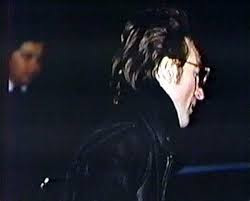
As one gets older, more famous people die. That is the weirdest aspect of age, is that you make note of all the TV, movie or music stars are dying on a regular basis. Each death of a TV series actor from the 1960s or 1970s immediately takes you back to that time when you were in front of the TV set. Due to the fact that their character, which I didn’t know was any different from their actual lives, was projected on your consciousness due to being in front of the set, seems to have more meaning for some reason. Often on Facebook someone posts a notice a certain actor or singer has passed, and I automatically put a “like” to that post, not due to the fact that I like that they died or they’re dead, but to acknowledge that person’s observation on that star, as well as a tribute on my part by ‘liking’ that post. It’s a strange thing to acknowledge one’s death by just liking a post. But there you go, a passing of time is often shocking in itself.
Published on November 22, 2015 11:02



